This is a sample article from the August 2010 issue of EEnergy Informer.
Integration and storage grow in prominence as renewable generation moves mainstream
For a long time, people in the utility industry were contemplating a future where renewable and clean energy technologies could provide a significant percentage of the electricity demand. Now that many European countries and a number of states in the US have actually achieved that dream, the focus of discussion has shifted to what do we do with all this intermittent energy, how can we integrate it into our existing transmission grid without jeopardizing network reliability, and what do we do with the energy when we do not need it or have too much of it? As the famous saying goes, compared to having too little renewable energy, these are good problems to have.
Recently, two major studies examined renewable integration issues in the context of the ambitious mandatory renewable portfolio standard (RPS) in California which requires 20% penetration by 2010 — yes, this year — and 33% by 2020, as reflected in an executive order issued by the outgoing California Governor, Arnold Schwarzenegger.
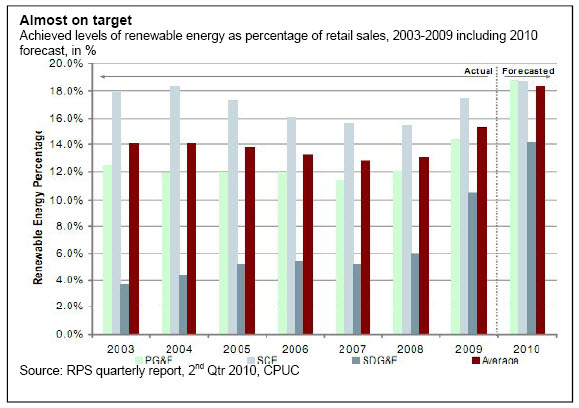
As reported in the July 2010 issue of this newsletter, California is projected to reach 18% new renewable — i.e., without counting existing large hydro resources — target by the end of 2010 and 21% by 2011, made possible in part due to the current economic recession afflicting the state. While this technically falls short of the 2010 mandate, the utilities are likely to be forgiven since they can claim that they have done all they could to execute the required number of contracts with renewable developers. The 2010 target, they claim with some justification, could not be achieved due to permitting and construction delays and/or lack of adequate transmission capacity to integrate the renewable energy from the remote sites to major load centers.
The first report, released on 8 July, 2010 by the California Independent System Operator (CAISO), based in Folsom, CA, is exclusively focused on renewable integration issues. For technical and detail-oriented engineers among our subscribers, this is a must read. The issues discussed, while California-centric, are nevertheless universal to any system operator who must deal with a 20% intermittent renewable generation mix — i.e., generation that is not dispatchable, is difficult and/or expensive to store, is not entirely predictable, appears at times where it may not be needed, and is often generated on the remote perimeters of the transmission network. Making matters worse, it is rapidly growing and is expected to reach a full one-third of retail sales within a decade in California — and in other places.
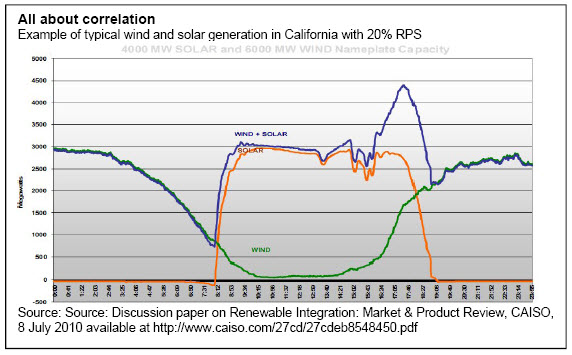
The renewable generation profile in California is further complicated by the fact that wind, already a major resource, is nearly perfectly misaligned with daily and seasonal demand and is heavily concentrated in a number of remote locations with limited transmission capacity. It blows when demand is low, and barely when it is most needed. Solar generation, on the other hand, has a much better correlation with California summer peak demand and some of the solar generation occurs closer to load centers — in some cases virtually on rooftops of industrial factories or warehouses, for example, where the demand is.
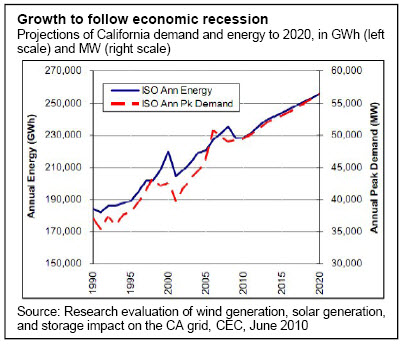
The second report (PDF), prepared by Kema Inc. a consultancy, for the California Energy Commission (CEC), takes a similar tack by looking into the impact of the growing renewable generation on the California’s grid and the need for energy storage or backup thermal generation. California’s energy demand and peak load are projected to resume their historical growth patterns once the current recession recedes.

Complicating the supply and demand integration is the peculiar features of California’s daily load profile, which is relatively flat and comparatively low in winter months hovering around 20 GWs, in contrast to hellish summer peaks that exceed 40 GWs, including daily swings of 15 GWs from low to peak.
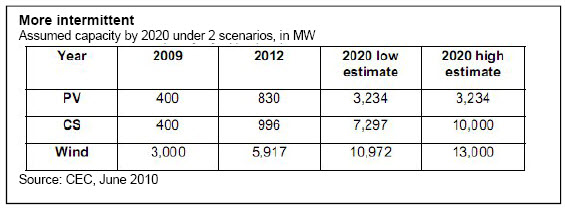
With the expected growth of renewable resources, primarily wind, solar PV and concentrated solar or CS — also referred to as concentrated solar power or CSP — managing system reliability while absorbing intermittent renewables becomes a challenge. Under a high-case scenario, installed wind capacity in California is projected to increase 4 times while CS may increase by 25 times between 2009 and 2020. Needless to say, these trends will merely be magnified if extended further into the future.
Given the unique characteristics of each type of renewable energy resource, CAISO has to modify its operating and dispatching procedures to accommodate ever-increasing percentages of renewable generation over time. While the problem may be merely challenging in certain months when system load is modest and correlated with renewable generation, it becomes daunting under other circumstances.
The CEC report simulates the impact of various loads and generation scenarios. The accompanying graph — too detailed to reproduce well but available in the report (pg 35) — provides examples of generation mix for typical days in July, a hot summer month in California, for various years.
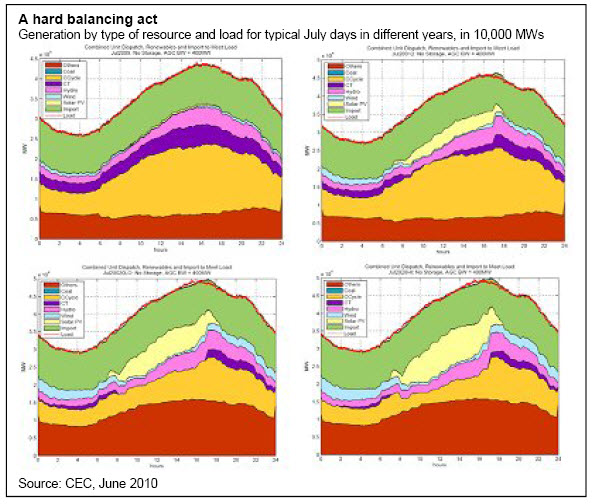
With so much non-dispatchable renewable resources, balancing load and generation becomes more complicated, hence the need for additional storage and/or more thermal generation. The CEC study concludes that — surprise — considerable additional storage will be required to handle the large swings in intermittent generation, as much as 3,000 MW under the high scenario case by 2020.

